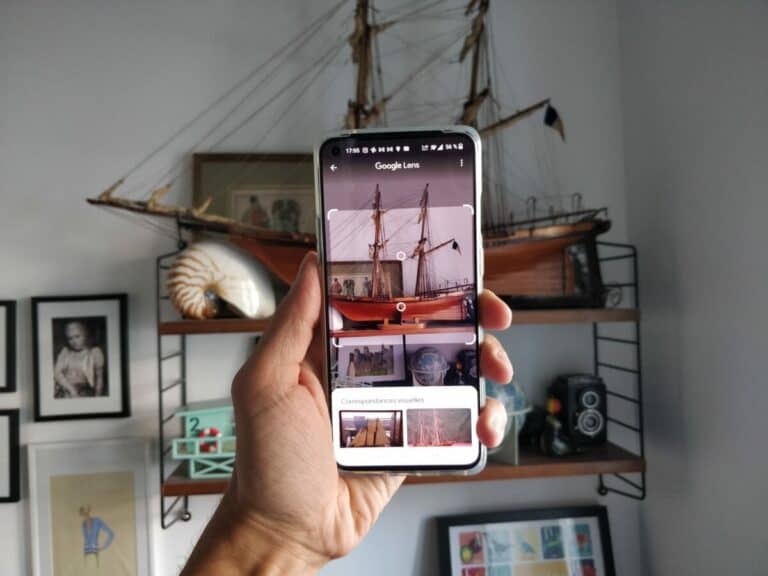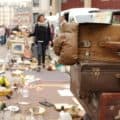Not everyone goes to a flea market or an estate sale for the same reasons: for some, such as antique professionals, there is undeniably the lure of profit, as they have to make a living from their professional activity. On the other hand, most of the average consumers are more interested in the treasure hunting aspect and the possibility to find a vintage item that will leave their home looking unique. Finally, a trip to a flea market or an estate sale does not necessarily imply the intention to buy something and is still a pleasant moment to spend among old things that sometimes remind us a little of our childhood.
I spent several years working in the high-end antique market with a renowned antique dealer from whom I learned a lot. I have also spent my weekends going to flea markets of all kinds and visiting estate sales. These experiences have undeniably sharpened my eye. They also allowed me to develop certain good practices and use tools that still help me today make sensational discoveries even in the most unexpected places.
The secret to making unique finds at an unbeatable price: knowledge, dedication, and a dash of luck
People often ask me, “Nicolas, what is your secret to making unique finds at unbeatable prices?” My answer is always the same: knowledge, dedication and a little bit of luck.
Knowledge obviously involves doing research on the topics that interest you. Reading dedicated books, getting information on the Internet, talking to experts in the field. And the wider the spectrum of knowledge, the greater the probability of identifying a valuable object in a flea market or estate sale. Knowledge is (literally) gold. Online marketplaces dedicated to antiques and vintage, like Ruby Lane, 1stdibs or eBay are also good sources of information. By spending a few hours every week, you can learn relatively quickly to identify the types of objects that collectors and vintage enthusiasts are looking for.
Assiduity or diligence means putting theory into practice and doing so regularly to increase your chances of finding valuable items. For example, by regularly visiting flea markets, antique shops, estate sales, auctions, etc. Visiting the same place several times in a row not only allows you to spot some items that might not have been obvious at first glance, but also allows you to build up a relationship with the sellers. This last point can give you a significant advantage over other customers. For example, priority access to certain new (old) items, preferential prices and knowledge.
Finally, even the best antique dealer with all the necessary knowledge and dedication will not find a treasure without a good pinch of luck, which often comes down to being in the right place at the right time. A cold and rainy day can be your best friend. So can arriving late, but just as a salesman is unpacking a box that hasn’t been opened yet. Or a long discussion that leads to a piece of information that is worth its weight in gold. Or simply saying “come on, one more box” before calling it a day.
Up Your Game With Technology
Now here’s the one piece of information you won’t get from the veterans of the antique market. Thanks to technology you can skip the knowledge part. I wrote an article a while back called 3 Reasons To Use Your Smartphone At The Flea Market that detailed how smartphones could make our lives easier as antique shoppers. Among other things, I referred to an app that uses your smartphone camera and a visual search algorithm, to tell you what you have before you.
Now, technology has evolved since the last two years when I wrote this article, and an even more powerful and better-integrated tool has appeared: Google Lens.
How I Purchased $3000 Worth Of Antiques For $170 at an estate sale thanks to Google Lens
Google Lens is a technology based on artificial intelligence. It uses your smartphone’s camera and deep machine learning to not only detect an object in front of the camera lens but also understand it and suggest actions such as scanning, translation, shopping, etc.
Google Lens allows you to point your phone at something, like an antique, and then ask Google Assistant what the object you are pointing at is. Not only will it give you the answer in pictures, but you’ll also get suggestions based on the object. For example, its rarity, a price range for identical or very similar items, or dealers or forums with potentially interested customers.
Google Lens is available for all Android devices. iPhone users will need to either download the Google App from the App Store or install the Google Photos app since Google Lens doesn’t have its own dedicated app on Apple’s App Store.
$3000 Worth Of Antiques Spotted in Just 45 minutes
Here is the little story of the $3000 antiques for $170 for those who have read this far. I mentioned above the “luck” factor in finding antique treasures. And that’s exactly what happened this time.
I was walking down the street in a small European town. As I passed a large door, I saw a sign advertising an estate sale. I walked through the half-open door and found myself in a large old flat. It was filled with all sorts of things, most of which looked quite old at first glance. I began my visit room by room, quickly scanning the objects present to get a general idea of the sheer amount of things to see.
Here and there I spotted objects of value without having an exact idea of what they might be worth – which would determine what I would be willing to pay for each object. As I was about to take a picture of an object, I accidentally (again, the ‘luck’ factor) pressed the Google Lens icon. The next thing I knew, dozens of image search results appeared on the screen for the image of the object I had just taken. I was just amazed at how quickly I had a wealth of information at my fingertips.
The Power of AI
Thinking it was probably a coincidence, I took the initiative to photograph other interesting objects with Google Lens. The results were consistent, and photo series after photo series provided me with an unimaginable wealth of information. Once I had sorted the items by estimated value, I was able to start the negotiation process – which turned out to be completely useless as I systematically accepted the asking price. To the point where one of the sellers intervened to tell me that “it would be nice if I could play the game a bit and make a lower counter-proposal”. So I did, not wanting to offend them, and asked if I could have an extra item on top of the rest. All in all, 60 minutes later, I walked away with $3000 worth of antiques for $170.
The haul included: three rare signed lithographs from the 1970s, a 19th century oil painting, two Art Deco bronzes, two Art Deco wall sconces, a complete set of Fornasetti plates, a mid-century modern chair and various smaller items. I haven’t decided what to do with these finds yet. I will probably sell some and keep the rest for my collection. I even found an original autographed photo of American astronaut Jim Lovell (Apollo 13, Apollo 8, Gemini 7, Gemini 12) that I took home for $10 (resale price: between $250 and $400). This photo now sits on a shelf next to a 1969 Scan-Globe Denmark lunar globe.
To Conclude
Even now, I still can’t believe that 1. a tool as powerful as Google Lens exists, and 2. that I only recently discovered it by “accident”. I’m now thinking of all the future applications Google Lens can have. Especially at flea markets and antique shops. And I can already foresee the future (even stricter than today) ban on taking pictures of objects in flea markets.
We are definitely living in an extremely interesting time from a technological point of view. But won’t the fact that we are able to know the value of an object on the spot make it even harder to find valuable things? In theory, an average person equipped with a smartphone and the appropriate app can now be almost on a par with an antiques expert. In a kind of challenge that reminds us a little of the archaeologist versus the Sunday treasure hunter with his metal detector.
Feel free to share your opinion or point of view in the comments section below.



